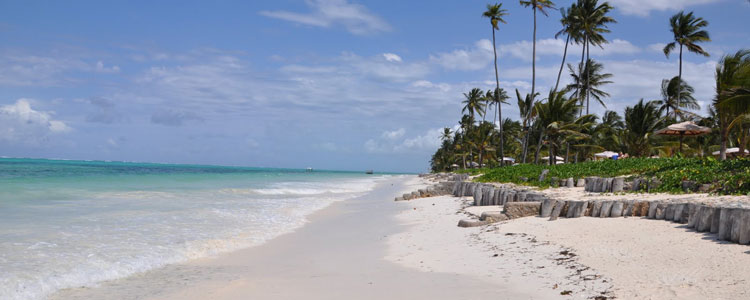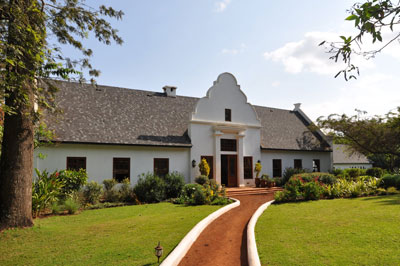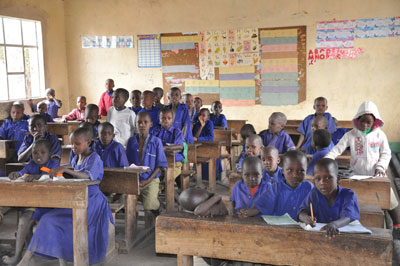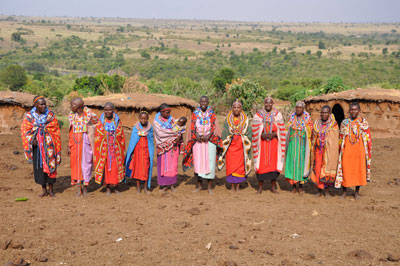Creating lasting memories on a family trip to Kenya, Tanzania and Zanzibar
by Evan Goldfischer, Pleasant Valley, NY
Most people thought my wife and I were crazy for taking a nine- and a seven-year-old to sub-Saharan Africa. What could we be thinking? But off we went to Kenya, Tanzania and Zanzibar for three weeks on what was to be our best family vacation ever.
Amsterdam stopover
We departed Newark on July 21, 2010, on a Delta flight headed for Amsterdam, albeit late. It had been delayed four hours for mechanical reasons, during which time we could not get off the plane, but the captain was nice and invited all the kids on board to tour the cockpit and sit in the pilot’s seat. Thankfully, we were in business class, and we found our flight attendants to be very pleasant.
The next morning we arrived in Amsterdam, a great stopover city. It is small and ideal for walking, yet there are enough interesting things to keep visitors busy for several days.
Using Starwood points, we stayed at Hotel Pulitzer (Prinsengracht 315-331), which is centrally located and part of the luxury collection of Starwood hotels. The hotel was created by joining a series of townhouses together, so the rooms are small and the stairways very steep, but you get a feel of what it might have been like to live in an Amsterdam home 200 years ago.
We toured the Anne Frank House, the Van Gogh Museum, the Rijksmuseum, Dam Square, Rembrandt’s house, the Portuguese Synagogue and the Jewish Historical Museum.
On to Kenya
On Saturday, July 24, we took a morning flight to Nairobi and were greeted at the airport by our local guide. After purchasing our visas, we were driven about 45 minutes to the district of Karen, named after Karen Blixen of “Out of Africa” fame and located just outside the city.
We arrived at The Giraffe Manor, a luxury inn modeled after a Scottish hunting lodge. The inn used to be part of the giraffe sanctuary and research center, but it was recently sold to a luxury-hotel operator.
Giles and Jess are the innkeepers and they could not have been nicer. Cosmos, the head butler, had been there for 11 years. He has served many celebrities, so tending to children’s requests was easy for him.
The house was very comfortable. We had the Karen Blixen suite, which had a loft, where the children slept, and several pieces of Karen Blixen’s original furniture.
The highlight, however, was the herd of Rothschild giraffes living on the property that poke their heads in the windows for breakfast and afternoon tea! Guests can hand feed them, and the brave can even subject themselves to a giraffe kiss (from an 18½-inch liver-colored tongue).
The inn maintains a strong tie to the Giraffe Centre, so we arranged a visit to learn about its conservation efforts. We saw a movie about Rothschild giraffes, held giraffe bones and also saw leopard tortoises.
Most people stay at The Giraffe Manor for only a night or two as a stopover on the way to or from safari, but we spent four nights there; thus, we were really able to see the local region.
We toured Karen Blixen’s house, now a museum; went to the Kazuri bead factory, where local single mothers are given jobs, with health care, to make beautiful jewelry, and visited the studio of an artist who specializes in crafting African animals out of some of the 80,000 flip-flops that wash up on the shores of Kenya each year.
We also drove up to Lake Navaisha, about 1½ hours away, where we boarded a small boat to go hippo and pelican viewing, then walked around Crescent Island, a private reserve without predators where the movie “Out of Africa” was filmed. There we were able to walk amongst giraffes, gazelles, impalas and other animals safely, while on all other safaris during our trip we had to remain in our jeep.
The Maasai Mara
On the morning of July 28 we boarded a small SafariLink scheduled charter, which took us to an airstrip in the Maasai Mara. We were met by a Maasai tribesman, Joshua Sonkoyo, who was to be our guide.
Joshua really knew the land and how to spot animals. We saw zebras, Cape buffaloes, waterbucks, gazelles, impalas, vultures, jackals, elephants, hippos, rhinos, lions and many birds as well as thousands of wildebeests migrating across the Mara River.
Joshua also arranged for us to visit a traditional Maasai village, where we learned about their pastoral way of life and saw their crafts. I learned how to start a fire with two sticks and a knife, and we got to hear some songs and see some dances, all for a small donation.
Our accommodations in the Maasai Mara were at the Olonana permanent tented camp. The tents were right on the banks of the Mara River. We could hear the hippos all night.
The tents were large, each with two queen-sized beds and a nice bathroom. Hot water and electricity were available in the early mornings and evenings.
Big John prepared some great food and easily accommodated special requests. All food, house drinks and laundry were included in the price, but spa treatments were not. My massage at the spa was just fair.
The camp is located 10 minutes from the entrance to the game park, so only a short drive was necessary each morning.
One of the highlights here was a hot-air-balloon ride. We saw the sun rise and had a great champagne breakfast in the bush. We also saw many animals, but even without that, the experience of gliding above the tree line in the Mara was fantastic.
Tanzania
After three nights it was time to move on to Tanzania. We flew back to Nairobi, cleared Immigration and took a one-hour flight to Kilimanjaro International Airport, where we purchased Tanzanian tourist visas ($100 each!). Then we took another 12-seat plane to the Lake Manyara airstrip, where we were greeted by our Tanzanian guide, Jabshir Rashidi.
Jabshir was a very experienced guide, but, unlike in Kenya, where the guides took their meals with the guests, giving everyone time to really get to know each other, in Tanzania the guides ate in a different part of the lodge, so it was more difficult to build a relationship.
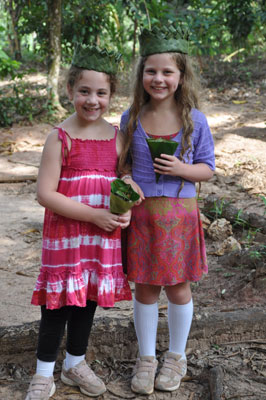
Jabshir was born in Tanzania, speaks English, Swahili and Kirangi and has been a guide for almost 20 years. He was very easygoing and not rigid about adhering to a specific itinerary, which is an important trait when traveling with little children.
We spent three nights at The Manor at Ngorongoro, a working coffee plantation that now operates as a luxury lodge. The public rooms, decorated in colonial fashion, were beautiful. The staff was excellent, although they did not speak English as well as the staff in Kenya. We stayed in a luxurious cottage overlooking the plantation.
The food was traditionally British and lacked innovation, but the staff tried very hard to please each guest.
Ngorongoro Crater is the largest nonflooded caldera in the world, its floor covering almost 100 square miles. There are several lodges at the crater’s rim, which would have eliminated our having to drive 45 minutes from our hotel, but we really enjoyed the Manor experience.
In addition to the usual animals, we saw flamingos and got very close to spotted hyenas, golden jackals, lions, cheetahs, plenty of elephants, hippos and rhinos. We made two trips to the crater floor, which I would recommend, as on one day we ran into animals everywhere while on the other, the sightings were not as plentiful.
One of the highlights of this trip was our visit to a school on the way from the crater to Tarangire National Park. The school had 377 students and 11 residential full-time teachers. Parents were enticed to send their children to the school, as it provided them breakfast and lunch, consisting of a maize-and-red-bean porridge, for free every day.
The school is in desperate need of resources, and we provided pens, paper and toothbrushes. My daughters enjoyed explaining to the children what life in America was like and enjoyed hearing from the children what it was like to grow up in Africa.
My older daughter walked away feeling so lucky to be able to attend her school in New York and have resources that are inconceivable in an African public school that, for her next birthday party, she requested that her friends not bring gifts but, rather, donate school supplies for us to send to Tanzania.
Tarangire National Park
We were very excited about our next stop, Tarangire National Park, because we had heard that elephants and baobab trees were abundant there. We were not disappointed.
Some of the trees were 800 years old, and we saw herds of elephants and got to observe them bathing and eating. I felt as though I really got to know them.
However, this was the only park that seemed to have a lot of mosquitoes and tons of tsetse flies. Do not wear black or blue, which attracts them.
Rather than stay in the park, we traveled 21 kilometers over a rocky road to stay at Tarangire Treetops Camp. The kids, in particular, were excited to stay in a tree house, but we could not have been more disappointed in the service or accommodation.
The tree houses were far apart, and you cannot walk alone in the evening due to the free-roaming animals, but the camp did not provide a walkie-talkie for emergencies as most camps do. There was no mosquito netting or cans of bug killer in the rooms, and large gaps under the door made it easy for pests to enter.
An elephant pooped at the base of the ladder one night and it was never cleaned up by the staff. The staff spoke little English.
By the third day, it was clear that we needed to move, and I was disappointed at how difficult the local tour operator, Ranger Safaris, and Elewana, the company managing this camp, made it to switch to the Arusha Coffee Lodge, which is also owned by Elewana. They finally conceded but not without considerable hassle, which left a bad taste in my mouth.
Arusha Coffee Lodge was the largest property that we stayed at on this trip. Its villas, scattered throughout the plantation, were quite luxurious and the food was excellent. The atmosphere felt more like that of a large hotel than an intimate lodge, but the setting was beautiful.
We enjoyed shopping at the nearby crafts center, touring the Tanzanite museum and shop run by the mining company and driving around downtown Arusha. I would definitely recommend a day here; it was a good break from all the days on safari.
Zanzibar
We then took another charter flight, from Arusha to Zanzibar. Zanzibar, originally ruled by the Sultan of Oman, joined Tanzania in 1964. It’s population is about 95% Muslim, and it has a very different feel than the mainland.
We had arranged to be picked up by a driver and taken to the Baraza Resort & Spa, located about an hour from the airport on a gorgeous white-sand beach on the Indian Ocean. Not only was the property magnificent, the service approached perfection.
One price included all meals, house drinks and nonmotorized watersports.
The staff was wonderful, the beach nearly perfect, the spa luxurious and the villas stunning. We had the two-bedroom Sultan’s Villa, equipped with two full baths, a large living room and a private plunge pool. Soft drinks and beer from the mini-bar were also included in the rate.
We never wanted to leave the property but did consent to a half-day tour of Stone Town, where we saw the old slave market. As Zanzibar is known as the spice island, we also went on a tour of the Butterfly Spice Farm and saw how cinnamon, lemongrass, vanilla, cloves, ginger, turmeric and other spices are grown.
Zanzibar was the perfect finish to our vacation.
Our three-week itinerary was arranged by The Africa Adventure Company (Ft. Lauderdale, FL; 800/882-9453). For our family of four, we paid a land-only price of $47,550, which included all accommodations, most meals, transfers, domestic flights, entry fees and private guides and vehicles. The hot-air balloon safari was extra ($1,550 for four).
So, despite the warnings of many veteran travelers, we not only survived a trip to East Africa with our kids, but seeing animals in their natural habitat and visiting the Maasai village and the Tanzanian school had a profound impact on our children. I would encourage any family that is thinking about visiting East Africa to take the plunge.

